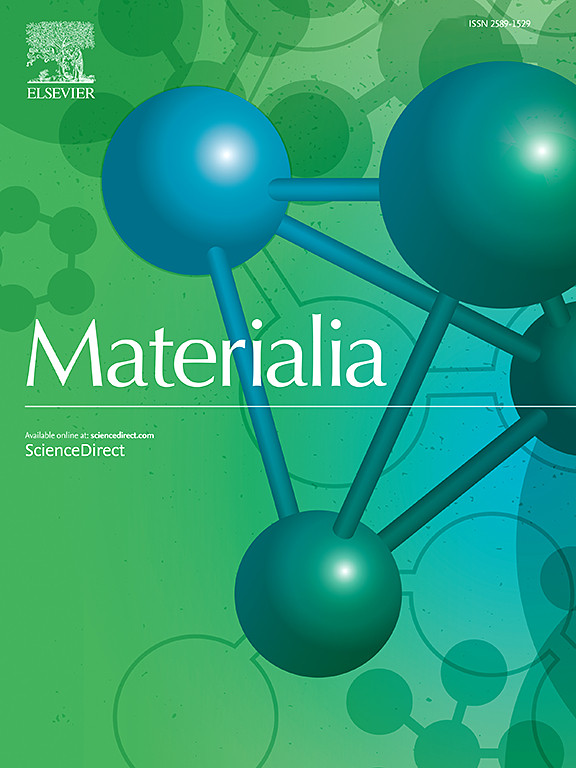基于键合的bcc固溶体合金晶格参数精确预测模型
IF 3
Q2 MATERIALS SCIENCE, MULTIDISCIPLINARY
引用次数: 0
摘要
晶格参数是包括新兴的高熵合金(HEA)家族在内的一类固溶体合金的重要材料特征。维加德定律是估计随机固溶体晶格参数的一种典型方法,已被HEA界广泛应用。然而,在这项工作中,我们发现维加德定律在预测具有体心立方(bcc)晶格的固溶体合金(包括难熔高熵合金(RHEAs))的晶格参数时变得不准确。维加德定律的不准确性源于它无法解释由异元素原子成键引起的电荷转移,这种转移会改变纯元素状态下原子的体积。为了解决这一问题,本文提出了一种新的基于二元有序金属间结构的原子键长的物理模型,通过有效地捕捉电荷转移效应来准确预测晶格参数。通过将该模型的预测结果与包含12种不同金属元素的292合金成分的第一性原理计算得到的晶格参数进行比较,验证了该模型的有效性。值得注意的是,我们的新模型在预测精度方面在很大程度上优于维加德定律,同时保持了相似的简单程度,没有拟合或任何经验参数进行预测。具体来说,该模型产生的均方根误差(RMSE)为0.006 Å,不到Vegard定律(RMSE = 0.015 Å)的一半。本文章由计算机程序翻译,如有差异,请以英文原文为准。

A bond-based model for accurate prediction of lattice parameters of bcc solid solution alloys
The lattice parameter is an important material feature for solid solution alloys, a class of materials which includes the emerging high-entropy alloy (HEA) family. The Vegard's law is a typical method to estimate lattice parameters of random solid solutions and thus has been widely used by the HEA community. However, in this work, we show that the Vegard's law becomes inaccurate in predicting the lattice parameters of solid solution alloys featuring a body-centered-cubic (bcc) lattice, including the refractory high-entropy alloys (RHEAs). The inaccuracy of the Vegard's law originates from its inability to account for the charge transfer that arises from heteroelement atomic bonding, which alters the volumes of the atoms from their pure-element states. To address this limitation, a new physical model based on the atomic bond lengths derived from binary ordered intermetallic structures is proposed for accurate lattice parameter prediction by effectively capturing the charge transfer effect. This new model is validated by comparing its predictions to lattice parameters calculated by first-principles calculations for 292 alloy compositions including twelve different metal elements. Notably, our new model largely outperforms the Vegard's law in terms of prediction accuracy while maintaining a similar level of simplicity, free of fitting or any empirical parameters for making predictions. Specifically, the model produces a root mean squared error (RMSE) of 0.006 Å which is less than half that of the Vegard's law (RMSE = 0.015 Å).
求助全文
通过发布文献求助,成功后即可免费获取论文全文。
去求助
来源期刊

Materialia
MATERIALS SCIENCE, MULTIDISCIPLINARY-
CiteScore
6.40
自引率
2.90%
发文量
345
审稿时长
36 days
期刊介绍:
Materialia is a multidisciplinary journal of materials science and engineering that publishes original peer-reviewed research articles. Articles in Materialia advance the understanding of the relationship between processing, structure, property, and function of materials.
Materialia publishes full-length research articles, review articles, and letters (short communications). In addition to receiving direct submissions, Materialia also accepts transfers from Acta Materialia, Inc. partner journals. Materialia offers authors the choice to publish on an open access model (with author fee), or on a subscription model (with no author fee).
 求助内容:
求助内容: 应助结果提醒方式:
应助结果提醒方式:


